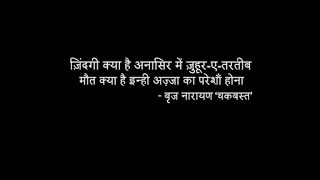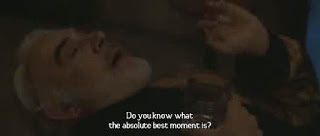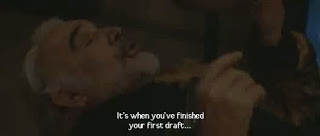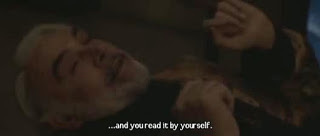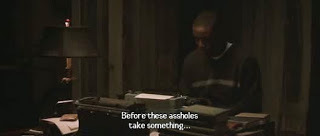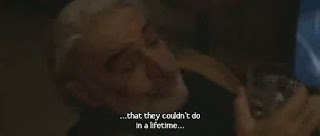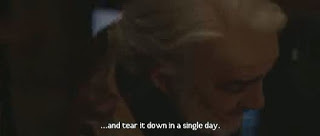Dibyajyoti Sarma's Blog, page 32
December 10, 2015
Moi Kohimare Adhunika Dalimi
This song, Moi Kohimare Adhunika Dalimi, By Bhupen Hazarika and Runumi Thakur, because I was in Kohima recently…
The English translations of the lyric for those who do not understand the language:
/I am the modern Dalimi from Kohima
/I am Gadapani from the modern plains
//Tonight, we are the companionsOn a night train towards Guwahati
/Perhaps you are recalling oftenThe days of childhood in Jakhama village Wearing red and blue wings like butterflies Those dances of so many sweet festivals
/I am not terrified of the foreign landBecause you are so close to meBut reaching Guwahati do not forgetThe affections of my Naga Hills
/Do you remember the bomb blast In Lumding-Diphu a few years ago
/Against that backdrop of so much tragedyWas the sweet introduction of our hearts
/Today I am the new daughter-in-law of Assam
/I am the son-in-law of Tuensang
//We are the blazing symbols Of the unity from the East
/That Dalimi of Lakshinath is now lost
/I too am not Gadadhar of the yore
//Yet, today this togetherness of oursReminds us of the past still alive
/Since the day the first Ahom king Sukapha descended the Patkai Hills and travelled to the plains, there has been an uneasy existence between the Assamese and Naga people. Much has been shared, including the language and the food habits. Yet, the unease remains, resulting into violence more often than not. Artists from the plains have often tried to find a solution to this. While writing the screen story for the first Assamese film ‘Joymoti’, Lakshinath Bezbaruah introduced the character of Dalimi, a happy-go-lucky Naga girl, who falls in love with the exiled prince Gadapani, hiding in the hills. This Bhupen Hazarika song, written in 1970s, takes a leaf from this reference. /
Published on December 10, 2015 01:26
November 24, 2015
Lachit Borphukar
Is the rightwing hijacking Lachit Borphukan now?
Today is the birth anniversary of the great Ahom general, and in the rightwing organisations have taken upon themselves the duty to introduce Lachit to the world, as ‘the great son of Sanatan Dharma.’
Really?
And, the war he fought with the Mughals? It was the war against the ‘infidels’, check the following link, http://www.hinduhumanrights.info/lach...
But Lachit wasn’t a Hindu, as we know the religion today. He was an Ahom first. And he wasn’t fighting for one community. He was fight for the sovereignty of a state against foreign invaders. And Assam, even during the Ahoms, was never about one particular community, especially, never about one particular religion. Assam is nothing if not multicultural, in every sense of the word.
For another fictional account for the Lachit story, check this link: http://www.thefrustratedindian.com/20...
Today is the birth anniversary of the great Ahom general, and in the rightwing organisations have taken upon themselves the duty to introduce Lachit to the world, as ‘the great son of Sanatan Dharma.’
Really?
And, the war he fought with the Mughals? It was the war against the ‘infidels’, check the following link, http://www.hinduhumanrights.info/lach...
But Lachit wasn’t a Hindu, as we know the religion today. He was an Ahom first. And he wasn’t fighting for one community. He was fight for the sovereignty of a state against foreign invaders. And Assam, even during the Ahoms, was never about one particular community, especially, never about one particular religion. Assam is nothing if not multicultural, in every sense of the word.
For another fictional account for the Lachit story, check this link: http://www.thefrustratedindian.com/20...
Published on November 24, 2015 04:50
The Assassin
 A house in ancient China! Where the assassins live… In Taiwanese director Hou Hsiao-Hsien’s slow-paced and enchanting The Assassin…
A house in ancient China! Where the assassins live… In Taiwanese director Hou Hsiao-Hsien’s slow-paced and enchanting The Assassin…What would I not give to live in a house like this…
Published on November 24, 2015 03:45
Funny Face
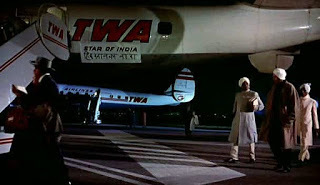 Was there really an international airline service in India called Star of India (competition to Indian Airlines?)? In did not know, until I noticed this towards the end of Audrey Hepburn-Fred Astaire musical Funny Face (1957). There is also a Hindi rendition of the name, helpfully to indicate that this is indeed intended for India.
Was there really an international airline service in India called Star of India (competition to Indian Airlines?)? In did not know, until I noticed this towards the end of Audrey Hepburn-Fred Astaire musical Funny Face (1957). There is also a Hindi rendition of the name, helpfully to indicate that this is indeed intended for India. The movie features a brief cameo of an Indian philosopher, whom the Audrey Hepburn character beats up and who helps the Fred Astaire character resolve his misunderstanding with his girlfriend at the airport in Paris, no less.
Interesting.
Published on November 24, 2015 03:41
Masaan (2015), the most talked about off-beat movie of th...
Published on November 24, 2015 03:29
November 23, 2015
Junun
Paul Thomas Anderson made a movie about music, in Jodhpur, for the album Junun, and it’s glorious… Featuring this track, ‘Roked’
Published on November 23, 2015 00:32
October 26, 2015
Finding Forrester
Published on October 26, 2015 04:13
Finding Forrester
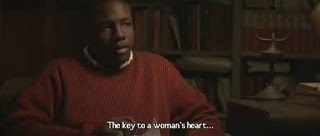
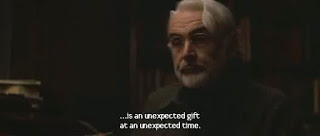 The key to a woman’s heart is an unexpected gift at an unexpected time.
The key to a woman’s heart is an unexpected gift at an unexpected time. The truth about dating. Sean Connery in Finding Forrester (2000).
Published on October 26, 2015 04:06
October 21, 2015
The Last Lecture
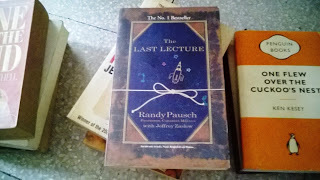 The Last Lecture is a New York Times best-selling book co-authored by Randy Pausch—a professor of computer science, human-computer interaction, and design at Carnegie Mellon University in Pittsburgh, Pennsylvania—and Jeffrey Zaslow of the Wall Street Journal. The book was born out of a lecture Pausch gave in September 2007 entitled "Really Achieving Your Childhood Dreams".
The Last Lecture is a New York Times best-selling book co-authored by Randy Pausch—a professor of computer science, human-computer interaction, and design at Carnegie Mellon University in Pittsburgh, Pennsylvania—and Jeffrey Zaslow of the Wall Street Journal. The book was born out of a lecture Pausch gave in September 2007 entitled "Really Achieving Your Childhood Dreams".The book has often been compared with Mitch Albom's Tuesdays with Morrie, a book on lessons the author learned from his dying college professor. When asked about his knowledge of the book, Pausch replied that he had never read that book, and commented that he "didn’t know there was a dying-professor section at the bookstore". Speculation that the book would be turned into a movie was turned down by Pausch himself.
More Here/
/
According to Randy Pausch “We cannot change the cards we are dealt, just how we play the hand” (Pausch & Zaslow, 2008). At 47 Pausch, a college professor at Carnegie Mellon University, was diagnosed with pancreatic cancer. He then decided to write The Last Lecture.
In their last year professors are often asked to give a talk, their last lecture, in which they reflect on their experiences. While they speak, audiences can’t help but mull the same question: What wisdom would we impart to the world if we knew it was our last chance? What would we want as our legacy?
This text is both inspiring and powerful. Pausch tells life stories that illustrate such themes as dreaming big, hard work, perseverance, sacrifice, self-confidence, modesty, courage, a positive outlook, and dealing with adversity. All who read this book will find themselves not wanting it to end as story after story, we get a glimpse of Pausch’s life.
Pausch believed that he won the parent lottery. He was influenced by his loving and supportive parents. Early in life he painted things that mattered to him on his bedroom walls such as a large silver elevator door, geometric shapes, chess pieces, Pandora’s Box, and a quadratic formula. Among these the quadratic formula mattered most to him.
Growing up Pausch had many experiences and learned lessons from them. He recounted experiences playing football that taught him lessons about the importance of teamwork, sportsmanship, perseverance, hard work and the ability to deal with adversity.
He remembered going through his dad’s things after his dad died. Among them were a citation for heroic achievement and a bronze star for valor his dad received while in the Army. His father had never mentioned these to him. Pausch says that he learned a lesson about sacrifice and modesty that day.
As a child he loved Disney World and dreamed of becoming a Disney Imagineer. Few achieve such dreams much less get the opportunity to achieve them. He got that opportunity while teaching at Carnegie Mellon and was awarded a sabbatical so that he could take the job. He recounted that after his plane landed in Los Angles he drove to Disney World with the Lion King soundtrack blaring on his convertible’s stereo and tears of joy streaming down his face.
In a chapter entitled, “It’s About How to Live Your Life,” Pausch talks of his cancer and it’s effects on the remainder of his life. He described how he tried to live his life and offered some tips on coping saying “this is what worked for me.” He talks about giving yourself permission to dream big, and achieving your goals. He points out that we all have a finite amount of time and energy and that time spent complaining cannot help us achieve our goals.
More here/
/
As a professor of computer sciences at Carnegie Mellon University, Randy F. Pausch expected students to pay attention to his lectures. He never expected that the rest of the world would listen, too.
But today, more than 10 million people have tuned into Dr. Pausch’s last lecture, a whimsical and poignant talk about Captain Kirk, zero gravity and achieving childhood dreams. The 70-minute talk, at www.cmu.edu/randyslecture, has been translated into seven languages, and this week Hyperion is publishing “The Last Lecture,” a book by Dr. Pausch and a collaborator, Jeff Zaslow, that tells the story behind the story of the lecture.
“The whole thing is very strange,” Dr. Pausch said over lunch at a diner near Norfolk, Va. “I just gave a talk. I gave talks my whole life.”
But of course, this wasn’t just any talk. “Let’s not ignore the obvious,” he said. “If I’d given that lecture but I weren’t dying, it wouldn’t have had the gravitas. Context is everything.”
Dr. Pausch, 47, is dying of pancreatic cancer, a disease that kills 95 percent of its victims, usually within months of diagnosis. Except for a pill bottle on the table in front of him, there were no outward signs of the deadly tumors growing inside him. Though he had just recently recovered from heart and kidney failure, he looked boyish, with a red knit shirt and a head of thick dark-brown hair.
Last fall, after doctors told him that he would probably have no more than six months of good health, Dr. Pausch stepped down from his academic duties and relocated to be closer to his family. But he decided to give one last lecture to a roomful of students and faculty members at Carnegie Mellon.
The lecture was not about cancer. Instead, he says, it was simply a father’s effort to digest a lifetime of advice for his children into one talk — a talk that Dr. Pausch knew he would not be around long enough to deliver in person. The children are Dylan, 6; Logan, 4; and Chloe, almost 2.
More here/
Published on October 21, 2015 04:44
The Little Prince
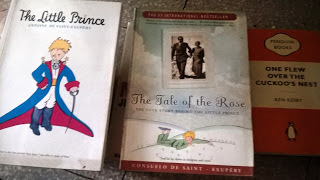 The Little Prince (French: Le Petit Prince; French pronunciation: [lə.pə.tiˈpʁɛ̃s]), first published in 1943, is a novella and the most famous work of the French aristocrat, writer, poet and pioneering aviator Antoine de Saint-Exupéry (1900–1944).
The Little Prince (French: Le Petit Prince; French pronunciation: [lə.pə.tiˈpʁɛ̃s]), first published in 1943, is a novella and the most famous work of the French aristocrat, writer, poet and pioneering aviator Antoine de Saint-Exupéry (1900–1944).The novella is the 3rd most-translated book in the world and was voted the best book of the 20th century in France. Translated into more than 250 languages and dialects (as well as Braille), selling nearly two million copies annually with sales totalling over 140 million copies worldwide, it has become one of the best-selling books ever published.
After the outbreak of the Second World War Saint-Exupéry was exiled to North America. In the midst of personal upheavals and failing health, he produced almost half of the writings for which he would be remembered, including a tender tale of loneliness, friendship, love, and loss, in the form of a young alien prince fallen to Earth. An earlier memoir by the author had recounted his aviation experiences in the Sahara Desert, and he is thought to have drawn on those same experiences in The Little Prince.
Since its first publication in the United States, the novella has been adapted to numerous art forms and media, including audio recordings, radio plays, live stage, film screen, television, ballet, and operatic works.
More here/
/
Twice widowed and not yet 30, Consuelo Suncin married the dashing young aviator Comte Antoine de Saint-Exupéry in 1931. As depicted in this posthumous memoir (The Tale of the Rose) (written in 1945, it lay undiscovered until the 1990s), they were an impossible couple: childlike and terminally irresponsible, Saint-Ex (as his friends called him) broke engagements without a word to disappear for months. Consuelo—sometimes naïve, often egotistical, and always temperamental—frequently exploded in nervous fits (one acquaintance described her as "Surrealism made flesh"). From Buenos Aires to Casablanca, Paris and New York, they failed to establish a home for themselves; Saint-Ex repeatedly fled the constraints of marriage, only to find he could not write without his wife's support and inspiration. She, for her part, loved him too much to leave him for good. Friends described Consuelo as a charming storyteller, always ready with a vivid observation ("She had the face of an umbrella" is her stab at a suspected rival). At its most heartrending, this book tells the story of a proud, charismatic woman who lived only for her husband, following him from continent to continent as he deceived and neglected her, then pleaded for her return when he began writing again. In 1943 he wrote The Little Prince, immortalizing Consuelo as the Prince's beloved Rose, too proud and thorny to admit her pain at his departure. A year later, the aviator disappeared over the Atlantic. For his many devotees, this memoir will offer an intimate glimpse of the strange and passionate life behind his mysterious work.
More here/
Published on October 21, 2015 04:19

